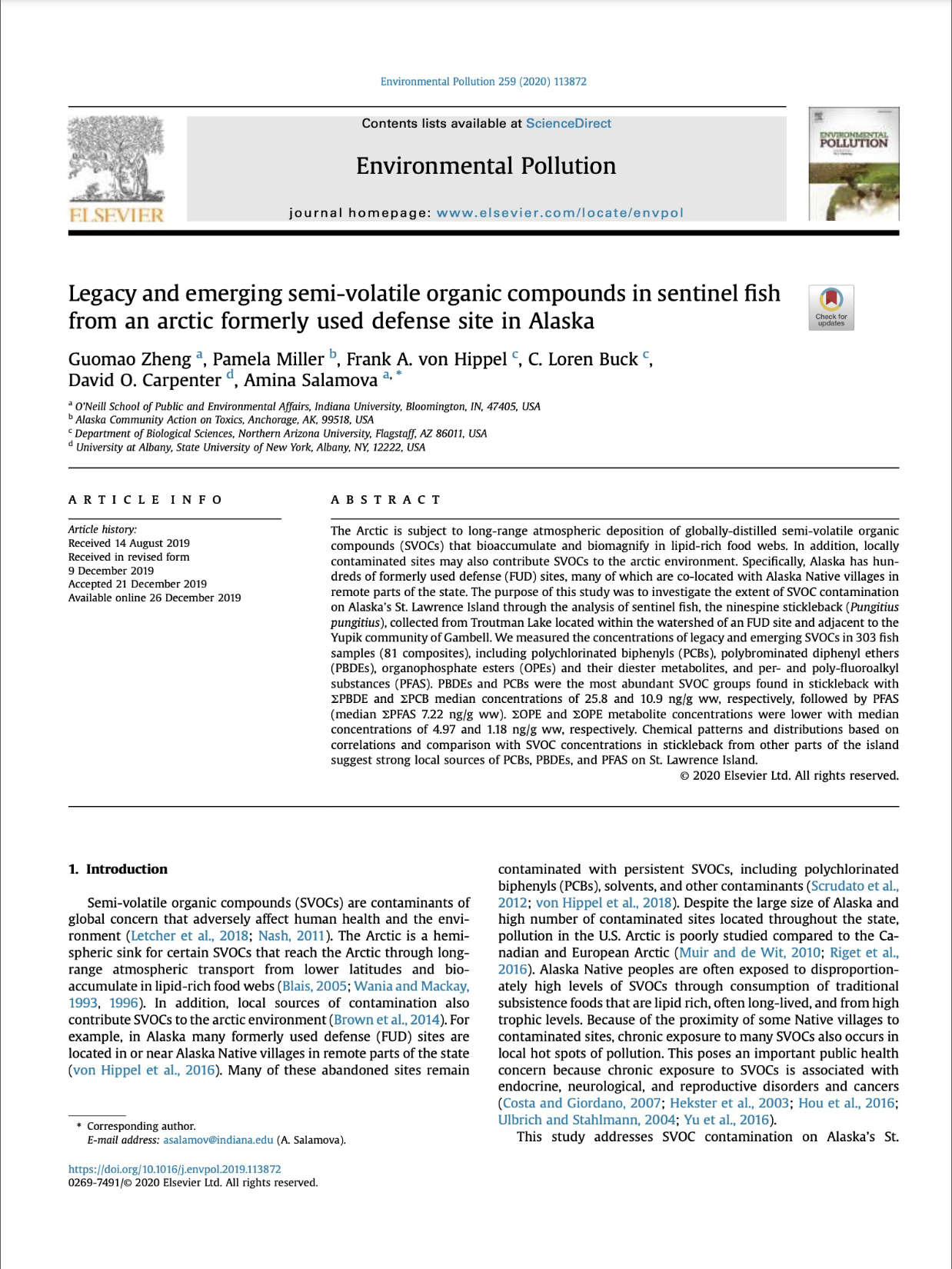Legacy and emerging semi-volatile organic compounds in sentinel fish from an arctic formerly used defense site in Alaska
About/Abstract
The Arctic is subject to long-range atmospheric deposition of globally-distilled semi-volatile organic compounds (SVOCs) that bioaccumulate and biomagnify in lipid-rich food webs. In addition, locally contaminated sites may also contribute SVOCs to the arctic environment. Specifically, Alaska has hundreds of formerly used defense (FUD) sites, many of which are co-located with Alaska Native villages in remote parts of the state. The purpose of this study was to investigate the extent of SVOC contamination on Alaska’s St. Lawrence Island through the analysis of sentinel fish, the ninespine stickleback (Pungitius pungitius), collected from Troutman Lake located within the watershed of an FUD site and adjacent to the Yupik community of Gambell. We measured the concentrations of legacy and emerging SVOCs in 303 fish samples (81 composites), including polychlorinated biphenyls (PCBs), polybrominated diphenyl ethers (PBDEs), organophosphate esters (OPEs) and their diester metabolites, and per- and poly-fluoroalkyl substances (PFAS). PBDEs and PCBs were the most abundant SVOC groups found in stickleback with SPBDE and SPCB median concentrations of 25.8 and 10.9 ng/g ww, respectively, followed by PFAS (median SPFAS 7.22 ng/g ww). SOPE and SOPE metabolite concentrations were lower with median concentrations of 4.97 and 1.18 ng/g ww, respectively. Chemical patterns and distributions based on correlations and comparison with SVOC concentrations in stickleback from other parts of the island suggest strong local sources of PCBs, PBDEs, and PFAS on St. Lawrence Island.

